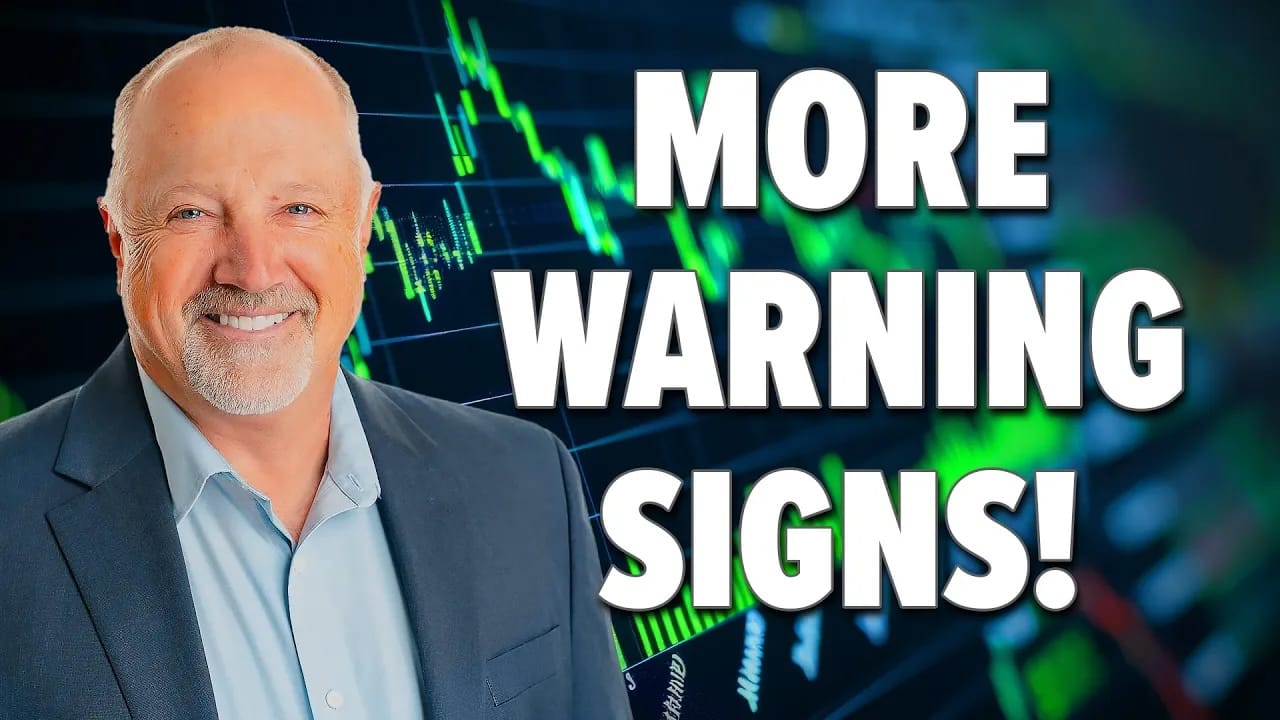FINANCIAL TURMOIL ROCKS MARKET -- S&P 500 UNDERCUTS JULY LOW -- BONDS SURGE, COMMODITIES FALL, YEN BOUNCES -- VIX SPIKES TO SIX-MONTH HIGH -- SEPTEMBER IS LIVING UP TO ITS BAD REPUTATION
COMMODITIES DROP AS YEN AND BONDS JUMP ... Most attention today was focused on the meltdown in financial stocks and big drops in global stock markets. A lot of action, however, also took place in other financial markets. Crude oil prices tumbled more than $5.00 to crack psychological support near $100. Chart 1 shows next crude support in the region of $85. With the exception of gold, most other commodities fell sharply as well (the CRB lost 11 points). Financial turmoil (and some dollar selling) pushed gold $23 higher. Chart 2 shows the streetTracks Gold ETF (GLD) bouncing off a support line drawn under 2006-2007. Gold stocks fell, however. The U.S. Dollar was modestly lower today. The strongest foreign currency continues to be the Japanese yen. Chart 3 shows the yen climbing to a two-month high against the U.S. Dollar. As I wrote last week, a rising yen shows a flight from risk (as traders cover yen shorts and sell other global assets). The main beneficiary of the flight to safety is Treasury bonds. Chart 4 shows the 7-10 Year Treasury Bond Fund (IEF) jumping to a six-month high as bond yields tumbled today. Bonds were the only asset class that rose today.

Chart 1

Chart 2

Chart 3

Chart 4
FINANCIAL MELTDOWN ... Although all market sectors fell today, financials were the biggest casualties. Chart 5 shows the Financials Sector SPDR (XLF) tumbling more than 9% in heavy trading. Most of the damage was in brokerage stocks. Chart 6 shows the Broker Dealer Index ending with the lowest close in years. That had a lot to do with the Lehman bankruptcy and the sale of Merrill to Bank of America and the loss of confidence in the brokerage sector. Chart 7 shows Goldman Sachs tumbling 12% to the lowest level in more than two years, and it did so on massive volume. Attention is now focused on AIG which tumbled 60% on huge volume (Chart 8). That crushed the rest of the market.

Chart 5

Chart 6

Chart 7

Chart 8
S&P 500 BREAKS JULY LOW ... By day's end, major stock averages saw losses averaging -5%. Chart 9 shows the NYSE Composite Index hitting a new low on huge volume. Chart 10 shows the S&P 500 closing beneath its July low to a three year low. Although the Dow lost -504 points and the Nasdaq -81, both remained above their July lows. Market breadth was terrible -- 83 big board advancers versus 2863 losers. The CBOE Volatility (VIX) spiked as did the CBOE Put/Call Ratio. Although that's a short-term negative, it may ultimately prove beneficial.

Chart 9

Chart 10
VIX SPIKES TO SIX-MONTH HIGH ... A week ago, I warned that a rising VIX Index from a low level was a bearish sign for stocks. That's because a rising VIX is associated with falling stock prices. The VIX spiked up 23% today and ended higher than its July peak. Over the short run, that's negative because it suggests that the VIX is heading toward the highs reached over the previous year ranging from 35.60 to 37.50. Those peaks corresponded to three prior short-term bottoms (see arrows). The good news is that a higher VIX is a necessary ingredient in a market bottom. We're not there yet, but it's finally heading in the right direction. The CBOE Put/Call Ratio (CPC) soared 45% to a six-month high at 1.47. Readings over 1.50 usually indicate that bearish sentiment is too high.

Chart 11
SEPTEMBER IS LIVING UP TO ITS BAD REPUTATION... September is living up to its reputation as the worst month of the year for the stock market. I recently warned that the market was entering the seasonally dangerous months of September and October. I also suggested, however, that bad Septembers often lead to October bottoms. That may be especially true in this election year when markets usually end the year on a strong note. The market is nearly a year into the bear market that started last October. In my view, it's too late to sell and too soon to buy. What happens to financial stocks over the next few days or weeks will determine if the market is headed for a stronger fourth quarter.







